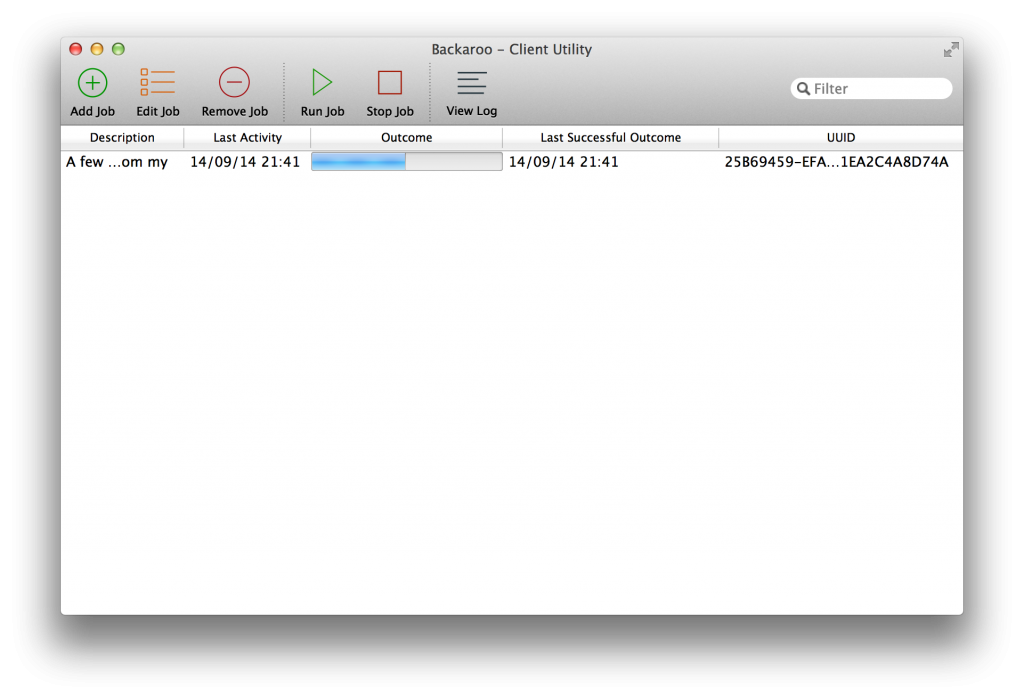Backaroo is a backup system for Apple Macs.
It’s free, and has a built-in uninstaller.
Download now or jump to screenshots | features | system requirements
Once you’ve downloaded Backaroo, you’ll see it’s actually just 2 simple apps: a ‘Sender’ and a ‘Receiver’. The Sender goes onto machines that will send backups, and the Receiver goes onto the machine that will store them. (Hint: they can work on the same machine).
Senders transfer backups to the Receiver, and the Receiver displays the central status. It’s thousands of times more efficient than Time Machine in many situations. It has more features, it’s more configurable, more secure, and has wide OS compatibility.
Video
This two-minute film shows how to set up an Account (on the Receiver) and a Job (on the Sender). The Job is then run, and the backups are shown as they appear on the Receiver.
Download now or jump to features | system requirements
Screenshots
The Backaroo Sender App: (Yes, it looks similar to the Receiver)

Specifying an Account in the Receiver:
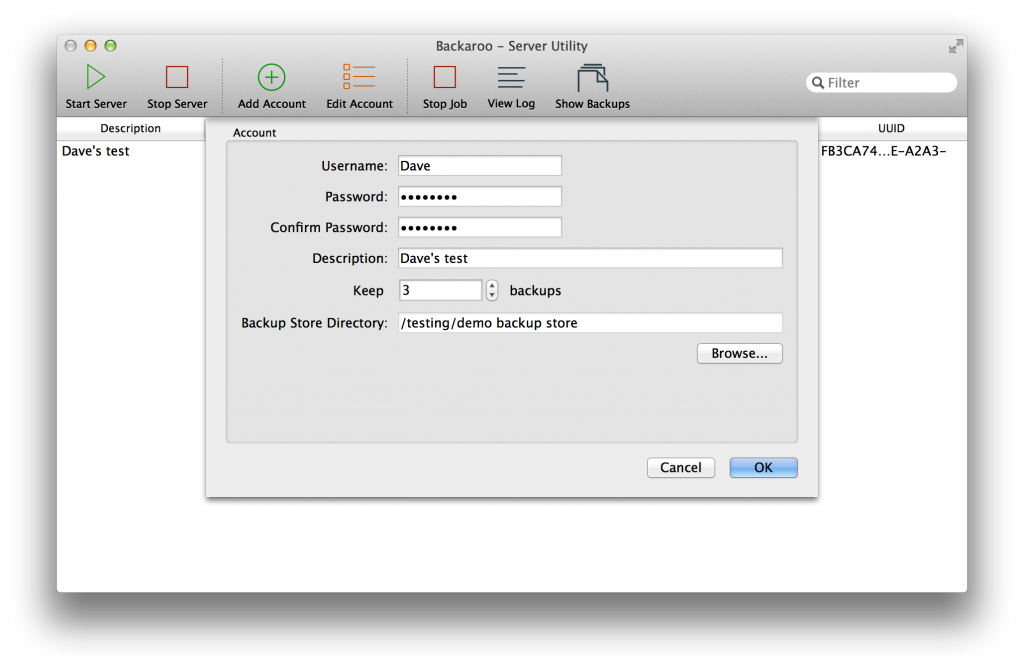
Specifying a Job in the Sender (step 1 of 5):
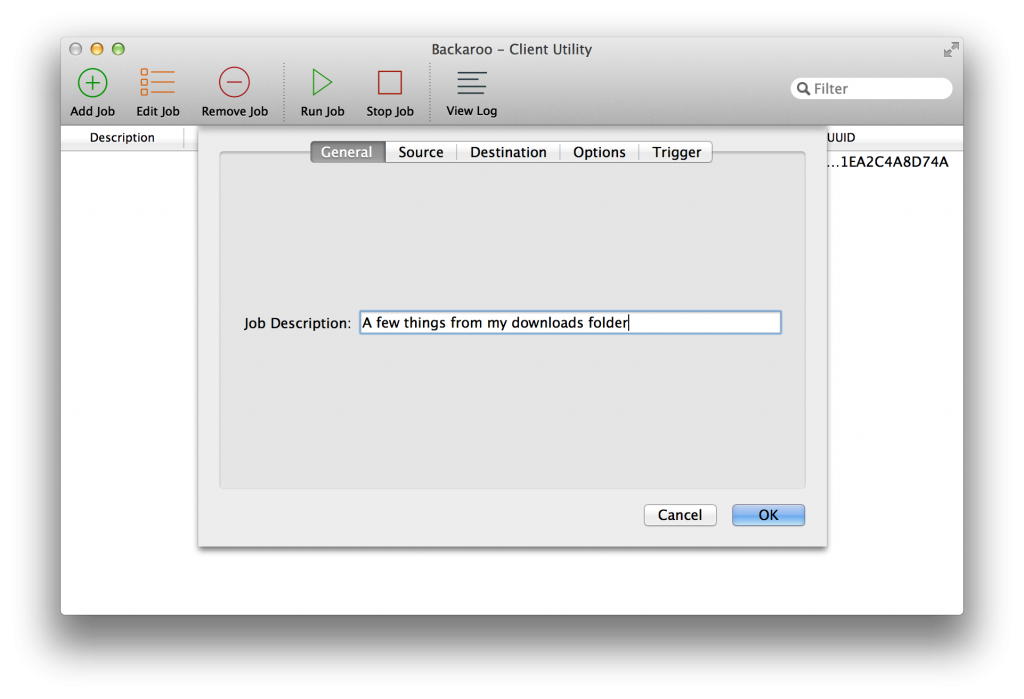
Specifying the source files/folders (2 of 5):

Specifying the destination (3 of 5):

Setting some options (4 of 5):

Setting a schedule (step 5 of 5):

Seeing the Job running on the Receiver:
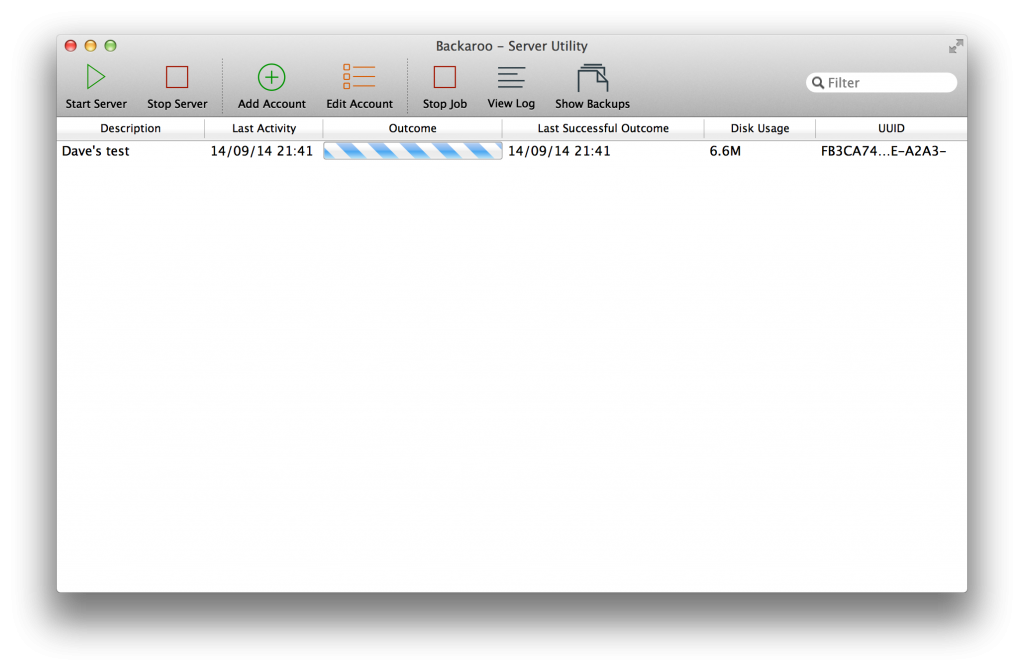
The Job has completed on the Receiver:

The Job has completed on the Sender:
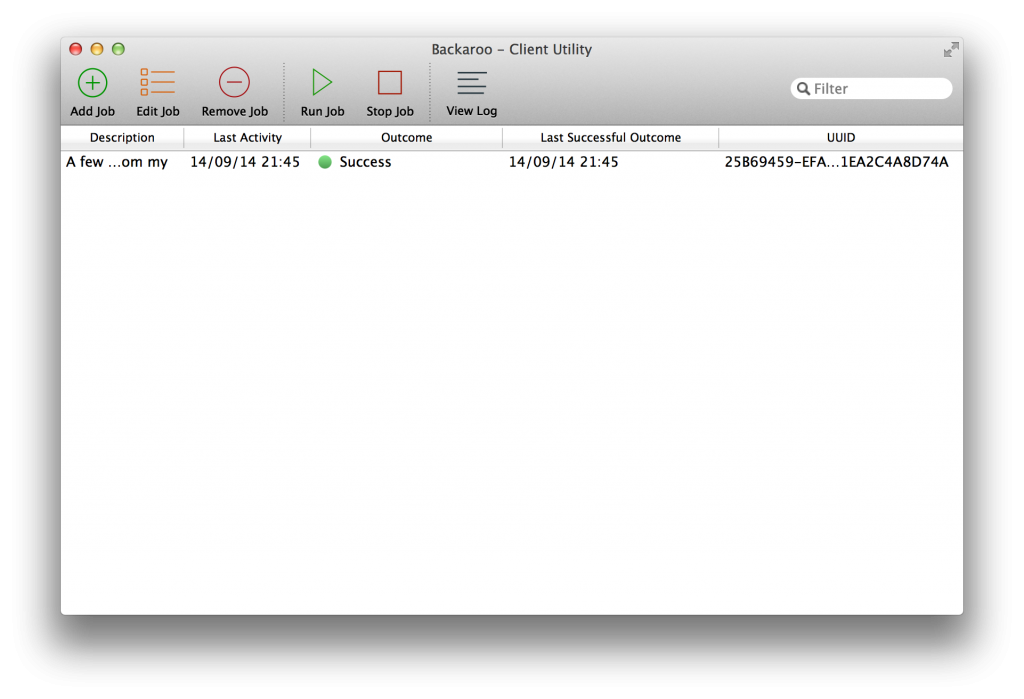
A Receiver with a few more accounts:

Download now or jump to system requirements
Features
- Backaroo is thousands of times faster than Time Machine in many situations.
- Backaroo is efficient when storing backups. It is common to see 3GB of backups using only 1GB of space, for example.
- Backaroo lets you schedule backups. For example, you could schedule backups to run:
– every 30 seconds
– every 2 hours
– every day at 10:00
– every Friday night at 21:00
– at login
– on the 31st of each month at 23:00, etc.. - Backaroo can backup over the Internet. Communications are encrypted.
- Backaroo lets you specify bandwidth limits – so backups don’t saturate network links.
- Backup processes get a low priority for CPU and disk access – so backups don’t slow down your machine.
- You can have multiple backup stores and locate them wherever you want.
- You can limit the size of each backup store.
- Backup stores are just regular folders. They are not databases. They are accessible with Finder; searchable with Spotlight; shareable; securable; etc.
- Backaroo runs as an invisible service; you can quit the applications and backups will continue to run in the background.
- Unlimited concurrent backups (even on non-server versions of Mac OS X).
- Backaroo can backup to multiple destinations.
- There is no limit to the number of Senders or Receivers that can be deployed, and the Sender and Receiver can both run on the same machine – which facilitates some quite advanced configurations.
Download now or jump to screenshots | video
Compatibility
Compatible with:
– Mac OS X 10.6.8 (Snow Leopard and Snow Leopard Server)
– Mac OS X 10.7 (Lion and Lion Server)
– Mac OS X 10.8 (Mountain Lion and Mountain Lion Server)
– Mac OS X 10.9 (Mavericks and Mavericks Server)
– Mac OS X 10.10 (Yosemite and Yosemite Server)
– Mac OS X 10.11 (El Capitan and El Capitan Server)
– macOS 10.12 (Sierra and Sierra Server)
– macOS 10.13 (High Sierra and High Sierra Server)
– macOS 10.14 (Mojave and Mojave Server)
Download now or jump to screenshots | features
Further Reading
Security Considerations
Advanced Configurations
The Backaroo Help Guide
Acknowledgments
Backaroo is essentially a GUI for rsync.
It exposes rsyncd at the Receiver and mixes rsync & launchd at the Sender with Stunnel providing network traffic encryption.
It is written in Python and uses the Qt framework thanks to the PyQt bindings.
The use of open-source code is hereby gratefully acknowledged.

